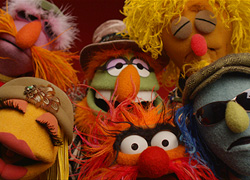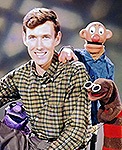Woo-hoo, my 100'th post!

Originally posted by frogboy4
The NBC VHS tape lists the running time as 88 minutes. The actual time from title card to end credits it 88 minutes 10 seconds.
Which is entirely consistent with the 4% speedup

Since it was shot digitally, I think there were no conversion issues. It is popular with some filmmakers to shoot with PAL formatted cameras to give their pieces more of a film-look. It's also easier to convert the 25 frames into 24. But I doubt that's how this film was shot. It' was likely NTSC.
Nope - no chance of that. If it was shot digitally, there's no such thing - PAL and NTSC are analogue formats. Digital is entirely different. Plus, I can spot NTSC artefacts at a hundred paces, and there's none.

From the picture, I'd say it was definitely shot at 24 progressive fps, which makes NTSC even less likely.
In this instance, conversion issues would largely be confined to the number of lines per picture. For the US broadcast, the tape would have been converted to 525 lines, and 3:2 pulldown applied to generate the required 30fps. The UK broadcast would have been converted to 625 lines, and simply sped up to 25fps.
The film-look that's irritatingly popular with TV directors these days is sometimes achieved with a progressive-scan camera (as in this case), but usually by 'filmising' interlaced video, which is about the stupidest idea to come down the pike in the last 50 years. It works by basically dropping every other field, so you lose half the vertical resolution (and get a nasty film-like flicker to boot). It's not popular with the viewing public over here! This latter trick is entirely possible with US video as well, although I don't know if anyone actually does it. I think it's used over here because prog-scan cameras cost more, and real film costs more again.
 Maybe a typo - 'UK' instead of 'US'? Luke?
Maybe a typo - 'UK' instead of 'US'? Luke?
 Welcome to the Muppet Central Forum!
Welcome to the Muppet Central Forum! Back to the Rock Season 2
Back to the Rock Season 2 Sesame Street Season 54
Sesame Street Season 54 The Muppets Mayhem premieres
The Muppets Mayhem premieres Bear arrives on Disney+
Bear arrives on Disney+ Sam and Friends Book
Sam and Friends Book
